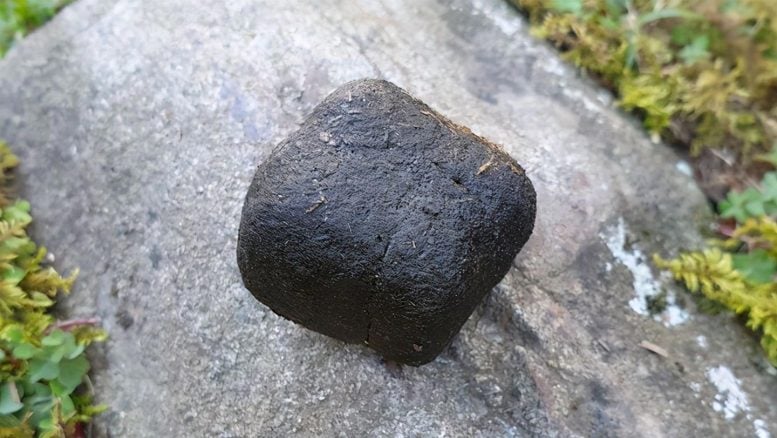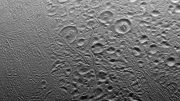Wombat Research That’s Not to Be Sniffed at
The findings – published in Royal Society of Chemistry’s aptly named journal Soft Matter – could help develop new colon cancer diagnostics.
An international team of scientists has been able to replicate how a wombat produces square poo – and it could change the way geometric products are manufactured in the future.
Research published today in the Royal Society of Chemistry’s journal Soft Matter expands on the discovery that wombat poo forms its distinctive shape within the wombat’s intestines, not at the point of exit as previously thought.
They have now discovered that the slow passage of the feces and differing stiffness within the last 17 percent of the intestines produces the square shape – before exiting via its round anus.
This discovery is not only applicable to wombats – for example, cancer increases the tension in different regions of the colon and can produce different shaped feces – but the technique can help scientists and engineers develop new ways of manufacturing soft materials, such as plastics in geometrical shapes.
These learnings could also be applied to other fields such as clinical pathology and digestive health in other species, including humans.
University of Tasmania wildlife ecologist Dr. Scott Carver made the accidental discovery while dissecting a wombat cadaver as part of his primary research into treating mange disease in wombats.
The cubed poo study focuses on bare-nosed (common) wombats, which are predominantly found across south-eastern Australia.
“Bare-nosed wombats are renowned for producing distinctive, cube-shaped poos. This ability to form relatively uniform, clean cut feces is unique in the animal kingdom,” Dr. Carver said.
“They place these feces at prominent points in their home range, such as around a rock or a log, to communicate with each other. Our research found that these cubes are formed within the last sections of the intestine – and finally proves that you really can fit a square peg through a round hole.”
Through a combination of laboratory testing and mathematical models, the researchers discovered that there are two stiff and two more flexible regions around the circumference of the wombat intestine.
Georgia Institute of Technology professor David Hu said: “Coming up with this absolutely new mechanism on how you can form these corners with a knife or any sharp edges took lots of iterations and we’ve now managed that without using the wombat itself.”
The combination of drying out of the feces in the distal colon and muscular contractions forms the regular size and corners of the feces.
Wombat intestines are approximately 10 meters (33 feet) long, ten times the length of a typical wombat’s body.
When humans eat, food items travel through the gut in a matter of a day or two. A wombat’s digestive process takes up to four times as long so it can extract all the nutritional content possible. They are also more efficient at extracting water from the intestine, with their feces a third dryer than humans.
The results could be used to help inform wombat digestive health when in captive management.
“Cube formation can help us understand the hydration status of wombats, as their feces can appear less cubed in wetter conditions. It also shows how intestinal stiffening can produce smooth sides as a feature of pathology,” Dr. Carver said.
“Now we understand how these cubes are formed, but there is still much to be learned about wombat behavior to fully understand why they evolved to produce cubes in the first place.”
Patricia Yang, a postdoctoral fellow at Georgia Tech, added that the research could have a number of uses. “We know, for example, that one of the early symptoms of colon cancer is that part of the colon can become stiff. It’s possible then that this forms an edge or unusual shape in the feces and could be an early indicator about the health of the colon.
“I don’t know if people will be interested in cubic sausages in the future, but this could change the way we shape soft matter, or how we can manipulate soft robots, in the future.”
Laura Ghandhi, Development Editor of Soft Matter from the Royal Society of Chemistry said: “This is a terrific example of how cross-discipline research and a passion for questioning everything can yield surprising and useful results. It also shows how creative approaches in science can inspire and ignite a passion for research that lasts a lifetime.”
The team of Australian and US scientists was awarded an Ig Nobel prize for “research that makes you laugh then think” in 2019.
Reference: “Intestines of non-uniform stiffness mold the corners of wombat feces” by Patricia J. Yang, Alexander B. Lee, Miles Chan, Michael Kowalski, Kelly Qiu, Christopher Waid, Gabriel Cervantes, Benjamin Magondu, Morgan Biagioni, Larry Vogelnest, Alynn Martin, Ashley Edwards, Scott Carver and David L. Hu, 8 December 2020, Soft Matter.
DOI: 10.1039/D0SM01230K










… as a topological issue, …
I don’t even know how I lived without this information.